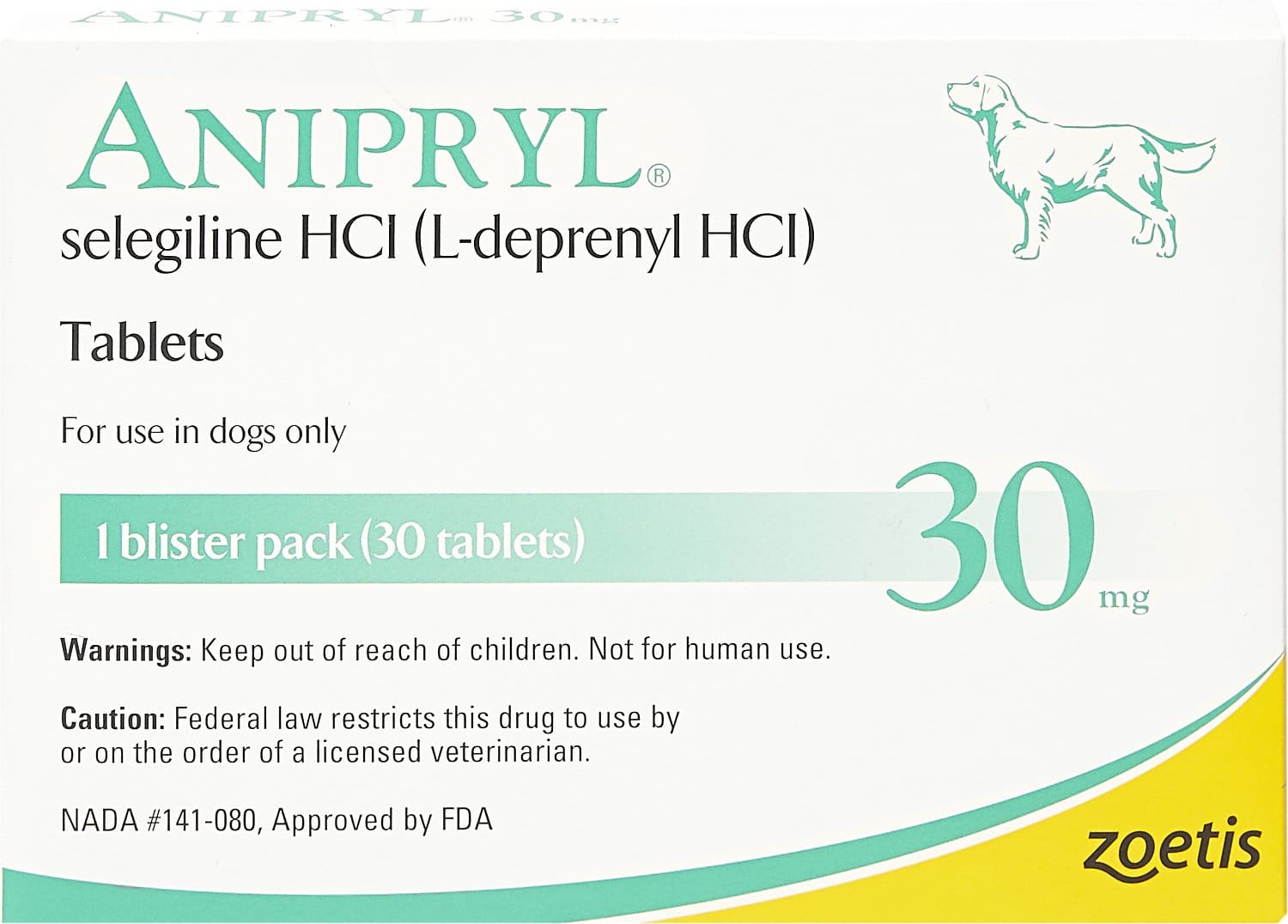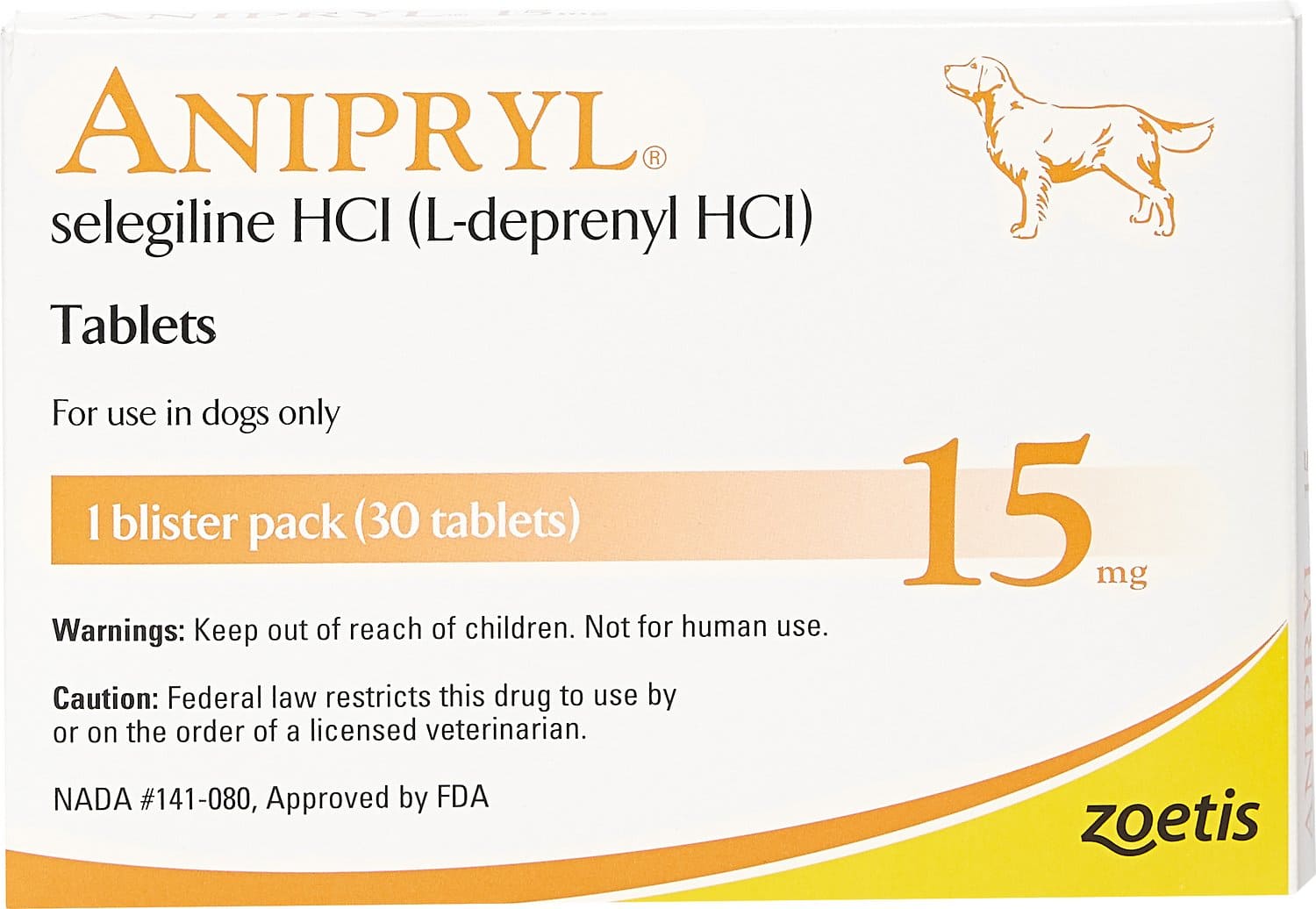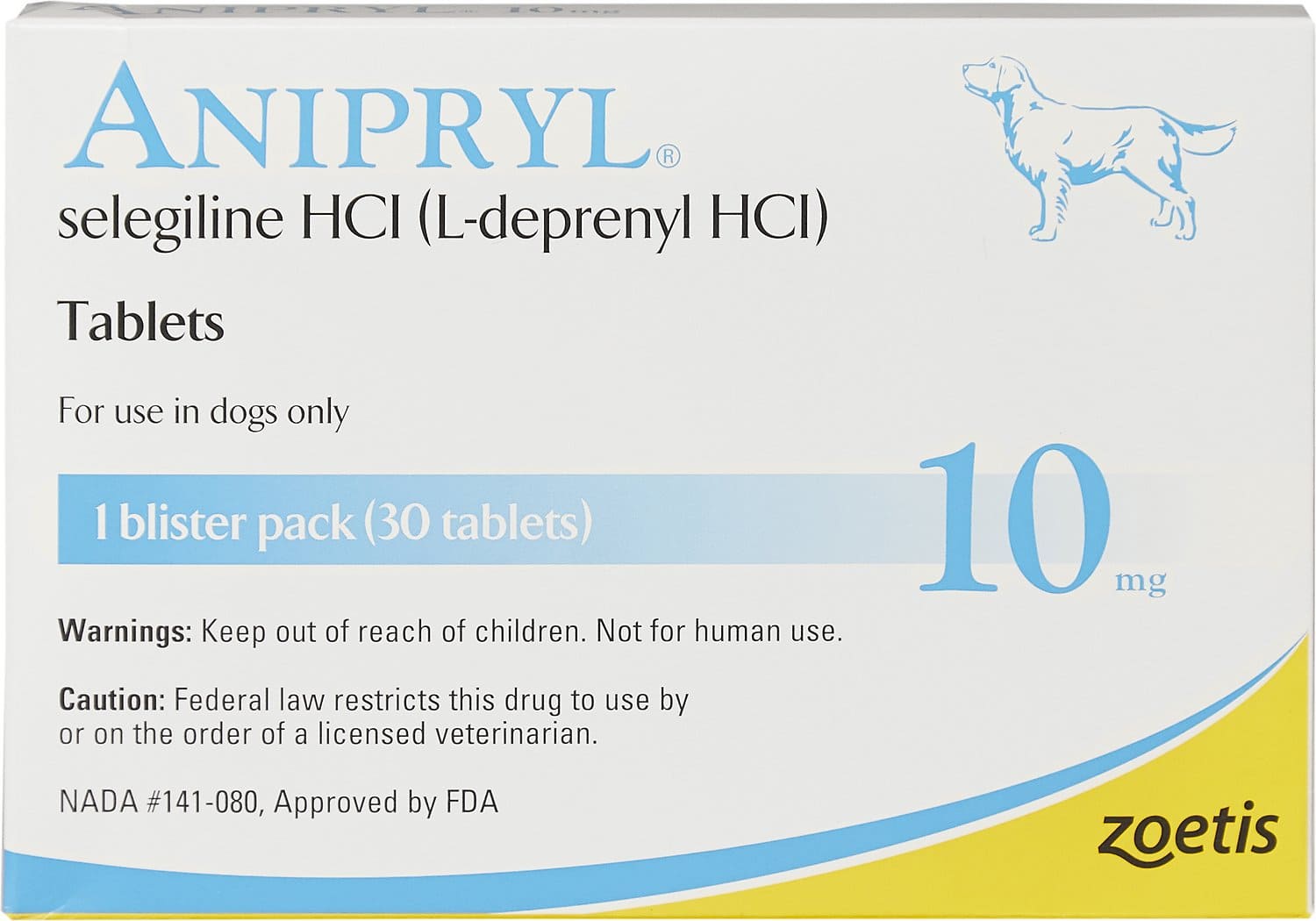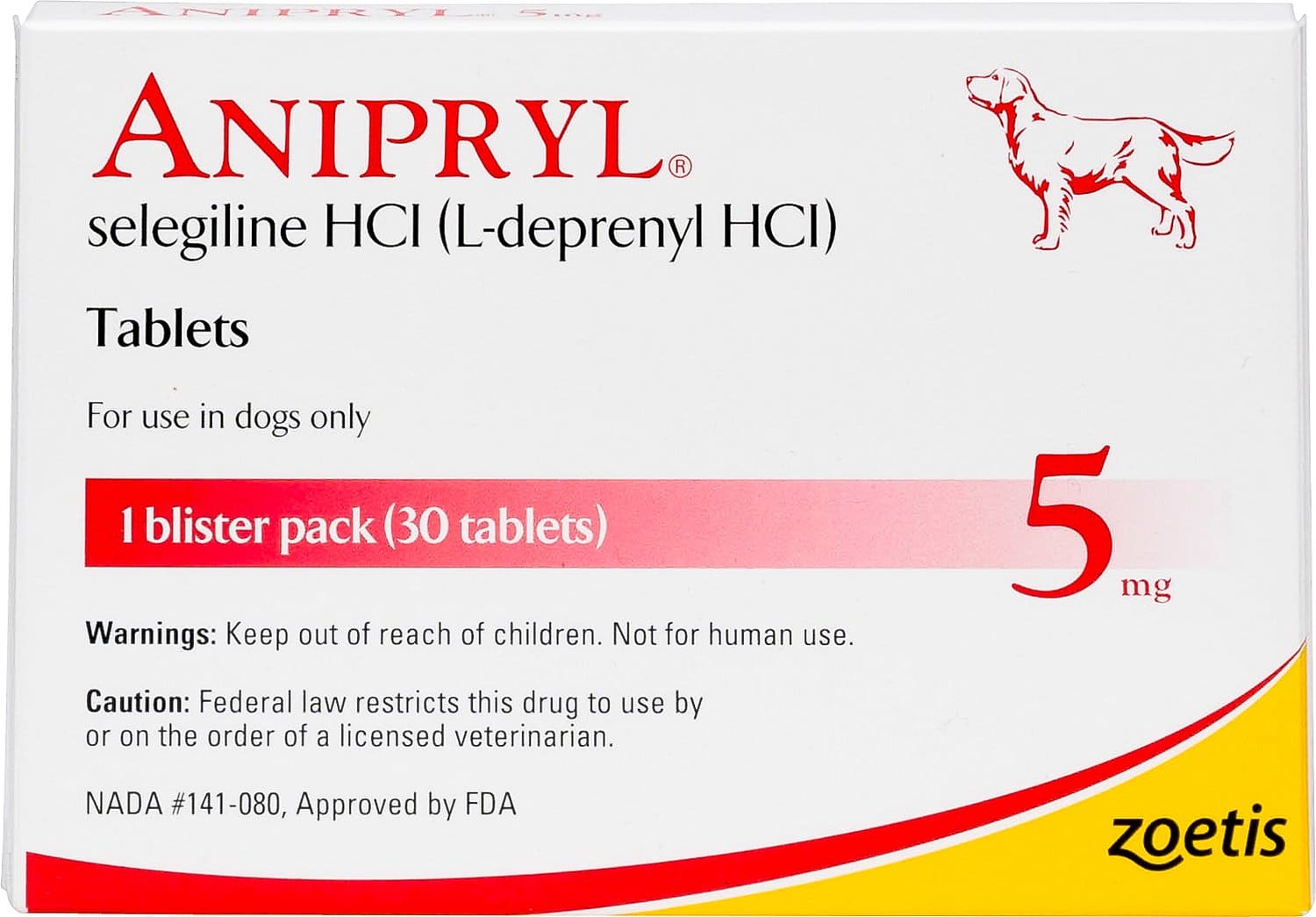Anipryl
For the control of clinical signs associated with cognitive dysfunction syndrome and pituitary dependent hyperadrenocorticism
 Prescription required
Prescription required
during checkout
Anipryl
For the control of clinical signs associated with cognitive dysfunction syndrome and pituitary dependent hyperadrenocorticism
 Prescription required
Prescription required
during checkout
Product description
Anipryl Selegiline HCl are white, convex tablets for dogs.
Active ingredients
Each Anipryl Selegiline HCl tablet contains:
| Name | Selegiline Hydrochloride (mg) |
|---|---|
| Anipryl Selegiline HCl 5mg Tablets for Dogs | 5 |
| Anipryl Selegiline HCl 10mg Tablets for Dogs | 10 |
| Anipryl Selegiline HCl 15mg Tablets for Dogs | 15 |
| Anipryl Selegiline HCl 30mg Tablets for Dogs | 30 |
Indications for use
Anipryl Selegiline HCl tablets are indicated for the control of clinical signs associated with canine cognitive dysfunction syndrome (CDS) and control of clinical signs associated with uncomplicated canine pituitary dependent hyperadrenocorticism (PDH).
Administration and dosage
Anipryl Selegiline HCl for Cognitive Dysfunction Syndrome (CDS):
Dosage:
- The recommended dosage for oral administration for the control of clinical signs associated with CDS is 0.5–1.0 mg/kg once daily, preferably administered in the morning. Initially, dogs should be dosed to the nearest whole tablet. Adjustments should then be made based on response and tolerance to the drug.
Clinical Use:
-
CDS is an age-related deterioration of cognitive abilities characterized by behavioral changes not wholly attributable to a general medical condition such as neoplasia, infection, or organ failure. CDS is typified by multiple cognitive impairments which affect the dog’s function. In clinical trials, the observed behavioral changes associated with CDS in older dogs included: disorientation, decreased activity level, abnormal sleep/wake cycles, loss of housetraining, decreased or altered responsiveness to family members, and decreased or altered greeting behavior. In clinical trials, Anipryl was shown to be effective in controlling clinical signs associated with CDS. After 4 weeks of treatment, dogs treated with Anipryl showed significant improvement when compared to placebo-treated controls in sleeping patterns, housetraining, and activity level. Some dogs showed increased improvement up to 3 months, however, onset, duration and magnitude of response varied with individual dogs.
-
The diagnosis of CDS in dogs is a diagnosis of exclusion, based on thorough behavioral and medical histories, in conjunction with appropriate diagnostic work-up and testing.11 Periodic patient monitoring to evaluate the response and tolerance to the drug and for the presence of concurrent or new disease is recommended
Anipryl Selegiline HCl for Pituitary Dependent Hyperadrenocorticism (PDH):
Dosage:
- The recommended dosage for the control of clinical signs associated with canine PDH is 1.0 mg/kg once daily, preferably administered in the morning. If no improvement is observed after 2 months of therapy, dosage may be increased to a maximum of 2.0 mg/kg once daily. If no improvement is seen after 1 month at the higher dose or if at any time clinical signs progress, the dog should be re-evaluated. In dogs whose clinical signs of PDH progress despite Anipryl therapy in the absence of concurrent disease, alternate therapy should be considered. Dogs should be monitored closely for possible adverse events associated with any increase in dose.
Clinical Use:
-
Clinical signs of PDH seen in clinical trials included panting, reduced activity, polydipsia, polyuria, changes in sleep patterns, altered appetite, obesity, alopecia, abdominal distention, reduced skin elasticity, thin skin, poor hair growth, pyoderma, decreased responsiveness to attention, and decreased enthusiasm of greeting. In clinical studies involving 125 evaluable cases of naturally occurring PDH, Anipryl was shown to be effective in controlling clinical signs associated with the disease. On physical examination, abdominal distention was the parameter which most consistently improved following treatment with Anipryl. Based on owner assessments, activity level was the parameter most consistently evaluated as “improved.” Approximately 60% of the dogs were evaluated by the veterinarians and owners to be “slightly improved” to “improved” after 1 month of Anipryl therapy. By month 2, veterinarians reported that approximately 77% were “slightly improved” to “improved.” Approximately 20% of dogs did not respond to Anipryl and were deemed treatment failures.
-
Those dogs that responded to Anipryl tended to do so within 1-2 months after treatment was initiated. Response to therapy varied between patients with some dogs showing improvement in all presenting clinical signs and others showing improvement in only 1-2 parameters. Duration of response was also variable, with some dogs continuing on Anipryl for over 1 year with good control of clinical signs and others showing an initial response to therapy only to be followed within several months by recurrence of clinical signs of PDH. There was no correlation demonstrated between an individual dog’s clinical response to Anipryl and that dog’s low dose dexamethasone suppression test results, therefore, monitoring should be based on history and physical examination findings.




